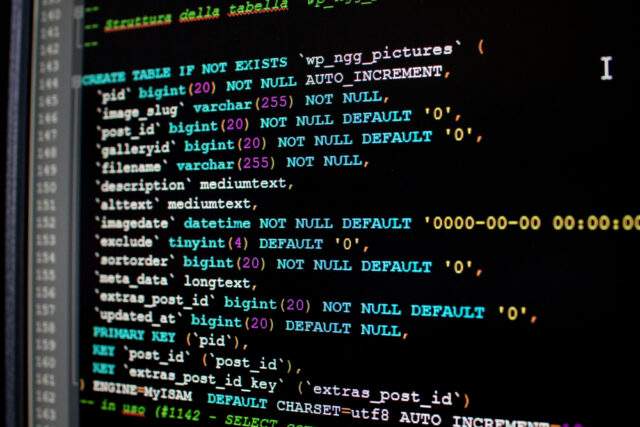What is fuzzing and how does it work?
Read our complete guide to find out what fuzzing is, how it works, its advantages & disadvantages & best practices for fuzz testing.
Read our complete guide to find out what fuzzing is, how it works, its advantages & disadvantages & best practices for fuzz testing.

Fuzzing or fuzz testing is an automated software testing technique that involves sending random or semi-random input data to a program to trigger errors and uncover vulnerabilities.
It’s an effective way to test the stability, reliability, and security of software applications, making it a key component of a comprehensive cyber defense strategy.
In this blog, we’ll be looking at:
The concept behind fuzzing is to stress the system and observe the results. This process frequently uncovers bugs, crashes, memory leaks, and security flaws that could have gone unnoticed during traditional testing procedures.
While conventional testing techniques often focus on well-defined inputs and expected usage patterns, fuzzing excels at identifying edge cases and unexpected interactions that can lead to system failures or security breaches.
Fuzzing has become a critical practice in enhancing software quality and security, particularly in the context of complex and interconnected systems.
As software applications continue to grow in complexity and are exposed to a multitude of inputs from users, networks, and external systems, the potential attack surface also expands. Fuzzing helps identify vulnerabilities that could be exploited by malicious actors, allowing developers to fortify their software against various forms of potential attacks.
Fuzzing originated in the 1980s and has since evolved into an automated and systematic approach. Initially, researchers like Barton Miller and colleagues manually provided unexpected inputs to software to observe behavior.
In the 1990s, automated tools like “PURIFY” and “SPIKE” emerged, aiming to systematically test software with various inputs to find vulnerabilities and defects. Dave Aitel’s SPIKE was particularly influential in highlighting security risks related to input handling.
Today, specialized tools and frameworks like AFL and libFuzzer utilize advanced techniques to efficiently identify vulnerabilities, making fuzzing a crucial practice in software testing and security efforts.
Understanding how fuzzing works involves taking a look at the series of processes involved in its generation.
The fuzzing process begins with the creation of test data. This data can be randomly generated or based on existing valid input data that is manipulated to create semi-random input data.
Next, the generated test data is fed into the software system as input. This can be done manually or automated using fuzzing tools.
The software system then processes the input data. If the input data is valid, the software should execute correctly. However, if the input data is malformed or unexpected, it may cause the software to behave unexpectedly or crash.
If a crash occurs, it’s analyzed to determine if it indicates a potential vulnerability. This can range from buffer overflows to unexpected behavior that could be exploited by an attacker.
Coverage analysis examines how much of the software’s codebase was tested by the input data. The goal is to achieve high code coverage to ensure the fuzzing process has examined as much of the software as possible.
Fuzzing is an iterative process. After a crash analysis, new test data is generated based on the findings and the cycle repeats. The objective is to continue discovering new bugs and vulnerabilities.
Fuzzing can expose a wide range of bugs that affect the stability and security of an application, such as input validation. When fuzzing input validation issues can be identified in the way the application handles user supplied data leading to program crashes and or potential exploits.
These occur when a software program incorrectly manipulates computer memory, potentially causing crashes or exploitable vulnerabilities.
Fuzzing can uncover issues with how a software system validates and processes input data, potentially leading to exploits.
These can range from buffer overflows to injection flaws, and other vulnerabilities that could be exploited by an attacker to compromise a system.
Fuzzing can help find errors in how a software system parses network protocols, potentially leading to communication breakdowns or security vulnerabilities.
APIs and libraries are critical parts of many software systems. Fuzzing can expose bugs in how these components function and interact with each other.
Fuzzing can find issues in how a software system handles errors and exceptions, potentially leading to unstable behavior or security vulnerabilities.
By pushing a software system to its limits, fuzzing can uncover performance and efficiency issues that may not be apparent during regular operation.
White box fuzzing involves high knowledge with full access to source code, enabling testers to create precise tests but may miss certain vulnerabilities, whereas black box fuzzing has low knowledge, no access to code, and relies on random input, making it versatile but potentially inefficient.
Gray box fuzzing, on the other hand, offers intermediate knowledge with partial access, combining benefits of both approaches but with some limitations. The choice depends on access, resources, and testing goals and organizations often use a mix of these techniques for comprehensive security testing.
Fuzzing isn’t a one-size-fits-all approach to software testing. There are numerous types of fuzzing, each with its advantages and use cases. Knowing which type to use can help tailor a more effective testing strategy.
This involves injecting random input data into a software system, making it a fast and easy way to conduct initial tests.
This type of fuzzing uses feedback from code coverage analysis to guide the generation of new test data.
Behavioral fuzzing involves studying the behavior of a software system to guide the fuzzing process and discover deeper, more complex bugs.
The opposite of random fuzzing, which involves using knowledge about the software system’s structure and functionality to create more effective test data.
Generation-based fuzzing involves creating test data from scratch based on known structures and formats.
This involves taking existing valid input data and modifying it to create new test data.
This involves testing how a software system processes different file formats, looking for parsing errors and other vulnerabilities.
This involves using advanced techniques, such as machine learning and symbolic execution, to guide the fuzzing process and discover deeper, more complex bugs.
Microsoft is a notable proponent of fuzzing and have used fuzz testing extensively in developing their software products.
In fact, Microsoft developed its own set of practices known as ‘Security Development Lifecycle (SDL)’ which they released to the public to encourage more extensive security testing.
Some of the elements within the SDL include performing Static and Dynamic Analysis Security Testing (SAST and DAST), penetration testing and fuzzing, which aims to help developers build more secure software by reducing the number and severity of vulnerabilities, while reducing development cost.
Their use of fuzzing helped them identify and fix potential vulnerabilities in their products, improving the overall security of widely used software like the Windows operating system and Microsoft Office.
Google operates a fuzzing infrastructure known as ‘OSS-Fuzz’, which is aimed at continuously fuzzing open-source software.
This project has been successful in identifying numerous security vulnerabilities in widely used open-source projects, which has contributed to the overall security of the software ecosystem. OSS-Fuzz operates on a massive scale, running millions of fuzzing iterations each day.
‘The Heartbleed Bug’ was a critical vulnerability in the OpenSSL cryptographic software library. This vulnerability, discovered in 2014, could be exploited to read memory that should have been secure, potentially revealing sensitive information.
Fuzzing was used as part of the process to discover this vulnerability. After it was identified, fuzzing was again used to ensure that the fix did not introduce any new vulnerabilities.
The Magellan bug was a series of vulnerabilities found in SQLite, a widely used database engine, by the Tencent Blade Team.
These vulnerabilities could allow an attacker to remotely execute arbitrary code or cause a crash. Tencent used fuzzing to uncover these vulnerabilities, demonstrating fuzzing’s effectiveness at identifying complex security issues.
Fuzzing has several key benefits that make it an invaluable part of any comprehensive security strategy.
Despite its benefits, fuzzing isn’t without its challenges. Understanding these can help organizations implement fuzzing more effectively.
Fuzzing might not cover all parts of a software system and achieve high code coverage, which can potentially leave vulnerabilities undiscovered.
Setting up a fuzzing environment can be complex, requiring specialized knowledge and resources. Generating effective test data for complex input formats can also be challenging.
Fuzzing can generate false positives, which require additional resources to analyze and validate. It also often lacks context awareness, potentially missing vulnerabilities that depend on specific states or conditions.
Fuzzing has domain-specific limitations when dealing with complex data formats, application-specific logic, stateful behavior, and semantic understanding, which may hinder its ability to discover certain vulnerabilities.
Additionally, it can have interaction limitations, such as inadequate testing of external component interactions, authentication, authorization, concurrency, and network protocols. Resource constraints, including high resource usage and time-consuming testing, further impact its applicability.
Fuzzing often lacks the ability to simulate real-world user behavior, potentially missing vulnerabilities that depend on specific user actions.
Many organizations can face these challenges, but perhaps not understand how to overcome them. Here are some suggestions:
Organizations should use fuzzing in conjunction with other testing techniques like static analysis and manual code review for a more comprehensive approach.
Fuzzing efforts should be prioritized based on the criticality and risk associated with different parts of the software system. Leverage intelligent fuzzing techniques, such as feedback-based fuzzing, to guide the process and discover deeper bugs.
Invest time in refining input generation strategies for effective test data. Enhancing the domain-specific knowledge used in the fuzzing process can uncover more domain-specific vulnerabilities.
Ensure sufficient resources are allocated to set up the fuzzing environment, analyze findings, and remediate vulnerabilities. Using real-world user behavior data can guide the fuzzing process to uncover more realistic vulnerabilities.
Implement continuous fuzzing and regression testing to catch new bugs or reintroduced ones. Collaboration with the broader security community can help organizations stay updated on the latest fuzzing techniques and findings.
If resources permit, engaging the services of a reputable cybersecurity firm can help implement and manage a comprehensive fuzzing strategy.
Implementing effective fuzz testing best practices is crucial for organizations to identify vulnerabilities and enhance the security and reliability of their software applications. Here are some key practices to consider:
Identify which parts of the software system will be tested with fuzzing, focusing on the most critical areas. Gather a diverse set of valid and invalid test inputs for generating fuzzed data.
Professional fuzzing tools can automate the process and increase its effectiveness. Customizing and optimizing test inputs based on the system’s specific characteristics can lead to better results.
Monitor code coverage during the fuzzing process and manage test execution effectively to balance the need for comprehensive testing with the availability of resources.
Findings should be analyzed systematically, with priority given based on their impact and risk. Prompt patching and remediation efforts should follow the discovery of vulnerabilities.
Regular fuzz testing can uncover newly introduced bugs and vulnerabilities. It’s also crucial to stay updated with the latest fuzzing techniques and tools to enhance the effectiveness of fuzz testing efforts.
A fuzz target is a specific part of a software system that is tested with fuzzing. It can be a function, a module, an API, or an entire application.
Fuzzing is useful for security testing because it can uncover a wide array of bugs and vulnerabilities that can be exploited by attackers. It pushes software to its limits, testing its stability, reliability, and security under extreme conditions.
Feedback-based fuzzing, also known as coverage-guided fuzzing, uses feedback from code coverage analysis to guide the generation of new test data. This helps uncover deeper, more complex bugs.
Fuzzing can be a black box test, a white box test, or a gray box test, depending on how much knowledge about the software system’s internal structure and functionality is used during the testing process.
White box fuzzing uses knowledge about the software system’s internal structure and functionality to guide the testing process, often using code analysis tools. Black box fuzzing, on the other hand, tests the software without any knowledge of its internals.
Grammar-based fuzzing, also known as generation-based fuzzing, creates test data from scratch based on known structures and formats. Mutation fuzzing, on the other hand, takes existing valid input data and modifies it to create new test data.
Fuzz testing is used across many industries, including software development, cybersecurity, telecommunications, automotive to name a few. Any industry that relies on robust and secure software can benefit from fuzz testing.
Fuzzing, with its ability to uncover an array of bugs and vulnerabilities, is an integral part of any robust cyber defense strategy. While it presents challenges, a strategic approach can unlock its full potential.
By combining fuzzing with other testing methods, focusing on critical areas, employing intelligent techniques, and refining input generation strategies, organizations can substantially bolster the resilience of their software.
At CovertSwarm, we are experts in continuously exposing and helping fix flaws in even the most complex systems. We believe in a proactive approach to security and have extensive experience with fuzzing.
Partner with our Swarm of ethical hackers to ensure your cybersecurity stance keeps pace with the bad actors. Contact us for more information about how we can help integrate fuzzing into your testing to create a more comprehensive testing strategy.

What is penetration testing and why is it important?
Discover what penetration testing is & why it’s important to organizations. You’ll also learn about different types & benefits of pen testing.

What is a SQL injection (SQLi) attack and how can you prevent them?
SQL injection is a complex world, but it’s important for organizations to understand the impact and preventative measures. Read our guide.

What is Cross-Site Scripting (XSS) and how do you prevent it?
Read our guide to find out what Cross Site Scripting (XSS) is, how it works, why it’s dangerous and how to detect, recover from and prevent…